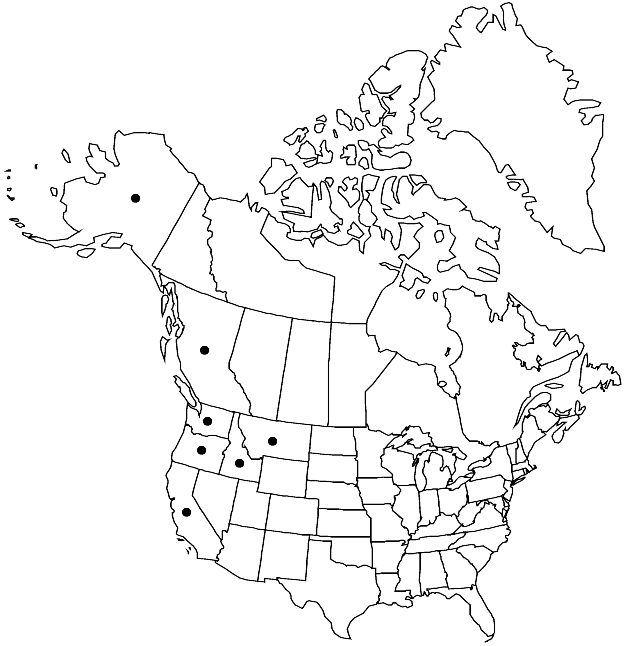Difference between revisions of "Dendroalsia abietina"
in H. G. A. Engler and K. Prantl, Nat. Pflanzenfam. 234/235[I,3]: 1214. 1909.
FNA>Volume Importer |
imported>Volume Importer |
||
| (5 intermediate revisions by 2 users not shown) | |||
| Line 1: | Line 1: | ||
{{Treatment/ID | {{Treatment/ID | ||
|accepted_name=Dendroalsia abietina | |accepted_name=Dendroalsia abietina | ||
| − | |accepted_authority=(Hooker) E. Britton | + | |accepted_authority=(Hooker) E. Britton |
|publications={{Treatment/Publication | |publications={{Treatment/Publication | ||
|title=in H. G. A. Engler and K. Prantl, Nat. Pflanzenfam. | |title=in H. G. A. Engler and K. Prantl, Nat. Pflanzenfam. | ||
| Line 9: | Line 9: | ||
|special_status={{Treatment/ID/Special_status | |special_status={{Treatment/ID/Special_status | ||
|code=F | |code=F | ||
| − | |label= | + | |label=Illustrated |
}} | }} | ||
| − | |basionyms={{Treatment/ID/ | + | |basionyms={{Treatment/ID/Basionym |
|name=Neckera abietina | |name=Neckera abietina | ||
|authority=Hooker | |authority=Hooker | ||
| + | |rank=species | ||
| + | |publication_title=Musci Exot. | ||
| + | |publication_place=1: plate 7. 1818 | ||
}} | }} | ||
|synonyms= | |synonyms= | ||
| Line 39: | Line 42: | ||
-->{{#Taxon: | -->{{#Taxon: | ||
name=Dendroalsia abietina | name=Dendroalsia abietina | ||
| − | + | |authority=(Hooker) E. Britton | |
| − | |authority=(Hooker) E. Britton | ||
|rank=species | |rank=species | ||
|parent rank=genus | |parent rank=genus | ||
| Line 53: | Line 55: | ||
|publication title=in H. G. A. Engler and K. Prantl, Nat. Pflanzenfam. | |publication title=in H. G. A. Engler and K. Prantl, Nat. Pflanzenfam. | ||
|publication year=1909 | |publication year=1909 | ||
| − | |special status= | + | |special status=Illustrated |
| − | |source xml=https:// | + | |source xml=https://bitbucket.org/aafc-mbb/fna-data-curation/src/2e0870ddd59836b60bcf96646a41e87ea5a5943a/coarse_grained_fna_xml/V28/V28_925.xml |
|genus=Dendroalsia | |genus=Dendroalsia | ||
|species=Dendroalsia abietina | |species=Dendroalsia abietina | ||
Latest revision as of 21:39, 5 November 2020
Plants stiff, wiry and dark green to green when dry, softer and bright green when moist, tail-forming. Primary stems to 10–15 cm, tightly adhering to substrate, stoloniform, densely rhizoidal. Secondary stems 10–12(–25) cm, densely foliate, distally pinnate to 2-pinnate and frondiform, more rarely nearly dendroid, circinate and curling downward when dry, opening and orthotropic when moist, proximally stipitate; lateral or tertiary branches common, ± equal, often bearing smaller (less than 10 mm) quaternary branchlets; paraphyllia many throughout stem, multiform, seriate or multiseriate to narrowly subulate, often branching; pseudoparaphyllia investing branch buds, subulate, deltate, or subfoliose, irregularly dentate; rhizoids many throughout stem. Stem leaves distinctly 5-ranked along stem, broadly ovate to ovate-lanceolate, ± plicate, 2–3 × 1–1.5 mm; base slightly decurrent; margins entire at base, usually dentate towards apex; apex acute to acuminate; costa strong, subpercurrent, percurrent, or barely excurrent, occasionally sinuate, increasingly dentate distally; basal laminal cells roughly isodiametric, walls incrassate, region filling basal angle of leaves; medial cells more linear than apical cells, 10–25 × 5–6 µm, walls incrassate; apical cells isodiametric to oval-rhombic, often prorate, walls incrassate. Branch leaves similar, usually smaller, narrower. Perigonia to 2 mm, leaves deltoid-apiculate to lanceolate-apiculate. Perichaetia borne ventrally, on secondary or occasionally tertiary stems, leaves short-deltoid to deltoid-apiculate or longer, sheathing, truncate-apiculate, to 2.5 mm. Seta brown, 0.7–2(–3) mm, straight. Capsule erect-symmetric, barely exserted, brown to red-brown, oblong-ovoid to ovoid, 2–2.5 × 1 mm, plicate when dry; operculum conic-rostrate; exostome teeth 16, white, to 0.6 mm, trabeculate, coarsely papillose distally, less so proximally; endostome basal membrane low, segments persistent, white, as long as exostome teeth, narrowly subulate, slightly carinate, basally connate, cilia absent. Spores spheric, 15–25 µm, papillose, pale brown.
Phenology: Capsules mature Mar–Jun.
Habitat: Covering whole tree trunks, limbs, and branches, large rock surfaces
Elevation: low to moderate elevations (0-1000 m)
Distribution

B.C., Alaska, Calif., Idaho, Mont., Oreg., Wash., Mexico (Baja California).
Discussion
Dendroalsia abietina is an important component of the bryoflora of western North America. Its primary range extends from the Channel Islands and Los Angeles County northward throughout cismontane California, Oregon, and Washington, to Vancouver Island (Georgia Straits) and southwestern British Columbia mostly south of 50˚ north latitude. Southern and northern disjuncts occur on Cedros and Guadalupe islands off the western coast of Baja California, and on Baranof Island near Sitka, Alaska, respectively. Transmontane disjuncts have been reported in some perennially mesic microhabitats, such as cold air traps in Lava Beds National Monument, California, and in the cedar-hemlock-larch ecozone of northern Idaho, northwestern Montana, and southeastern British Columbia (the so-called interior wet zone, an area noted for many maritime disjuncts). Dendroalsia abietina is one of the most common epiphytes throughout its primary range. It is often the dominant epiphyte on Arbutus, Chrysolepis, Lithocarpus, and Quercus bark, covering the entire trunk and leaving little space for competition. Although in southern California D. abietina has been reported as common along the coast, throughout most of its range it usually grows away from the maritime spray zone and more abundantly away from the first coastal ridges inland (D. H. Norris and J. R. Shevock 2004). The species becomes extremely common in the Inner Coast Range and the oak woodlands of Sacramento Valley, southern Oregon, and Willamette Valley.
Selected References
None.
